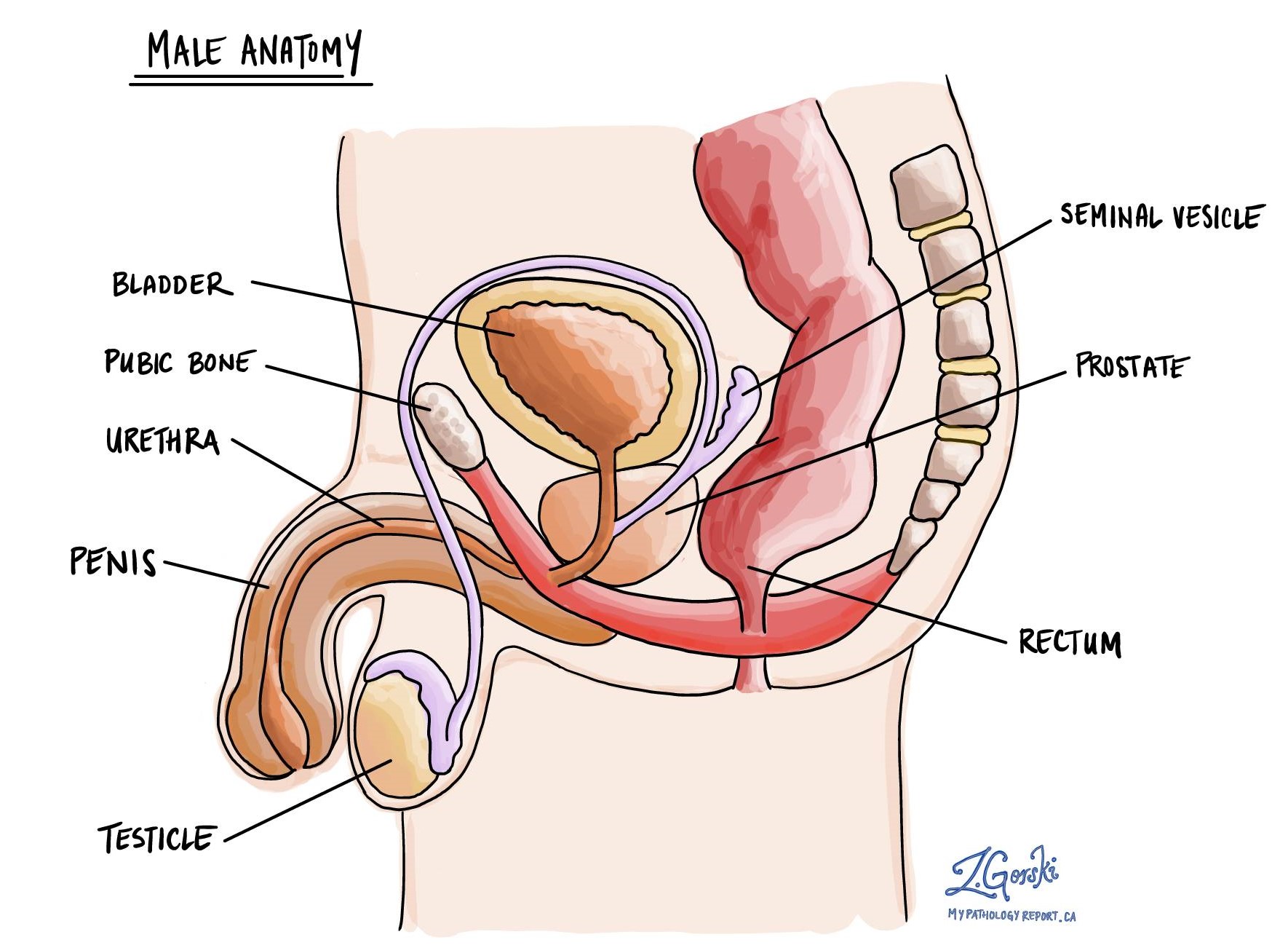The Pathology Dictionary Team
April 13, 2023
What is the testicle?
The testicle, or testis, is part of the male reproductive system. A man has two testicles, which are egg-shaped organs that when fully matured measure approximately 5 cm in the greatest dimension. The testicles are each suspended by a structure called the spermatic cord, which is composed of connective tissue and muscle. The testicles are covered in a fleshy sac of skin called the scrotum. The scrotum hangs between the legs and beneath the penis.

What is the function of the testicle?
After puberty, the testicle is responsible for making sperm. The testicle also produces testosterone, which is a male sex hormone.
What are the parts of the normal testicle?
Seminiferous tubules
The tissue within the testicle is made up of hundreds of tiny tubes called seminiferous tubules. The seminiferous tubules are lined by millions of specialized cells called germ cells. Germ cells are responsible for the production of sperm (spermatozoa), which occurs through a process called spermatogenesis. The sperm produced within the seminiferous tubules travels through a series of ducts to eventually reach a coiled structure called the epididymis.
Epididymis
An epididymis sits on top of each testicle. Immature sperm are stored and mature within the epididymis. During ejaculation, sperm is pushed from the epididymis and into the vas deferens which is a tubular structure residing within the spermatic cord. The vas deferens eventually joins with the seminal vesicle of the prostate to form the ejaculatory duct. The sperm then passes through ducts within the prostate to empty into the urethra and exit out the tip of the penis.


